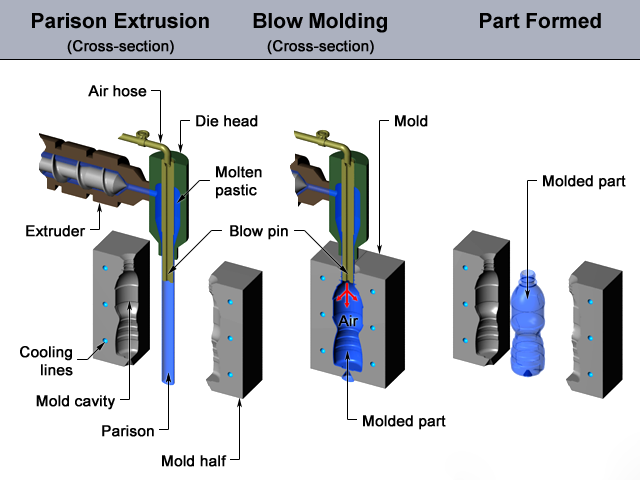Blow Molding Process
You are here: Home / Blow Molding Process
Blow molding is a manufacturing process by which hollow plastic parts are formed. In general, there are three main types of blow molding: extrusion
blow molding, injection blow molding, and injection stretch blow molding. The blow molding process begins with melting down the plastic and forming
it into a parison or in the case of injection and injection stretch blow moulding (ISB) a preform. The parison is a tube-like piece of plastic with
a hole in one end through which compressed air can pass.
The parison is then clamped into a mold and air is blown into it. The air pressure then pushes the plastic out to match the mold. Once the plastic
has cooled and hardened the mold opens up and the part is ejected.
Blow molding is a process used in conjunction with extrusion or injection molding. In one form, extrusion blow molding, the die forms a continuous semi-molten tube of thermoplastic material. A chilled mold is clamped around the tube and compressed air is then blown into the tube to conform the tube to the interior of the mold and to solidify the stretched tube. Overall, the goal is to produce a uniform melt, form it into a tube with the desired cross section and blow it into the exact shape of the product. This process is used to manufacture hollow plastic products and its principal advantage is its ability to produce hollow shapes without having to join two or more separately injection molded parts. This method is used to make items such as commercial drums and milk bottles. Another blow molding technique is to injection mold an intermediate shape called a preform and then to heat the preform and blow the heat-softened plastic into the final shape in a chilled mold. This is the process to make carbonated soft drink bottles.


